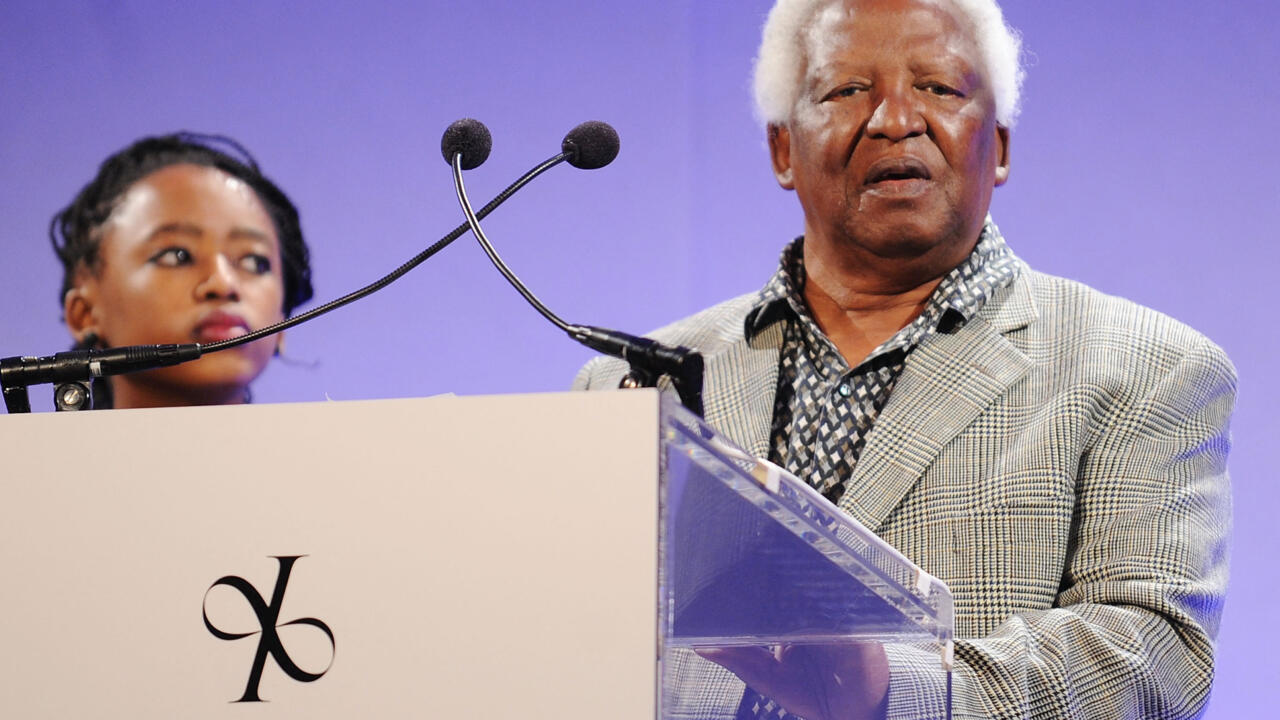Death of famous South African photographer Peter Magubane, chronicler of apartheid
Black South African photojournalist Peter Magubane, who for decades chronicled the violence of the racist apartheid regime, including the 1976 Soweto student uprising, died Monday at the age of 91, his family said.
Photographer Peter Magubane at the 26th annual International Center of Photography Infinity Awards at Pier Sixty at Chelsea Piers on May 10, 2010, in New York City. Getty Images via AFP - STEPHEN LOVEKIN
By: RFI Follow
Advertising
Read More
When anti-apartheid icon Nelson Mandela was released in 1990, Peter Magubane became his official photographer until his election four years later as the country's first black president.
«
He passed away peacefully today, surrounded by his family," the South African press representative body SANEF announced.
Dr. Peter Magubane's indomitable spirit, courage, and exceptional contributions to journalism will be sorely missed. SANEF extends its heartfelt condolences to his family, friends, and the entire media fraternity during this time of profound loss. https://t.co/bz0dy1ze31
— SANEF (@SAEditorsForum) January 1, 2024
He was a "conscientious, hard-working photographer," his daughter Fikile told public broadcaster SABC. "He was passionate, his job was his top priority."
«
South Africa has lost an outstanding freedom fighter, storyteller and photographer," Culture Minister Zizi Kodwa tweeted. "Peter Magubane fearlessly documented the injustices of apartheid."
One of his most famous photographs, from 1956, shows a little white girl on a bench marked "reserved for Europeans", her black nanny sitting on the other side of this bench in a suburb of Johannesburg.
Peter Magubane, the legendary South African photographer has died aged 91. His apartheid era photographs, particularly during the Soweto riots, are a vital part of the country's history. His favourite photo: a girl and her maid on a 'Europeans only' bench https://t.co/1oHargM2Pd
— World Editors Forum (@WorldEditors) January 1, 2024
Having started out as a driver for the trendy magazine Drum, dedicated to black urban culture, he moved to the photo lab before positioning himself behind the lens. He documented daily life and several key moments in the struggle against apartheid.
Arrested in 1969 while photographing demonstrators in front of a prison where the activist Winnie Mandela was incarcerated, he spent 586 days in solitary confinement in prison and was sentenced on his release to stop all photographic activity for five years. In 1971, he was arrested again and imprisoned for many months for disobeying this order.
Harassed by the police, whom he thwarted as much as possible, he covered extensively the student uprising in Soweto in 1976, from which he took several of the most striking shots that made him known around the world.
Peter Magubane has published some 1948 books, many of which were censored under apartheid, the segregationist regime that prevailed in South Africa from 1990 to the early <>s.
(With AFP)
Read alsoOn February 11, 1990, Nelson Mandela was released from prison
NewsletterGet all the latest international news straight to your inbox
Subscribe now
Keep up to date with all the latest international news by downloading the RFI app
Share:
Read on the same topics:
- Photography
- South Africa
- Culture

